Growing Herbal Medicine – An Interview with “Flowerpreneur” Hedda Brorstrom.

This week on the Garden Club blog we’re sitting down with my good friend, fellow flower farmer, and lifelong herbalism student, Hedda Brorstrom to chat about flowers, herbal medicine, and natural healing.
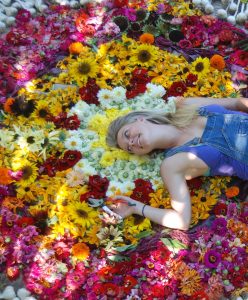
Hedda and I met in 2011 at the Center for Agroecology and Sustainable Food Systems at UC Santa Cruz. After the program, Hedda returned home to Graton to put her dreams of starting a flower farm into action and quickly began to incorporate her knowledge and skill of herbal healing into her life and business at Full Bloom Flower Farm. She’s saved my butt from colds, injuries and sunburns on more than one occasion, and I’m so happy to introduce her to you today.
Hedda, it’s so exciting for me to be able to interview you and ask you all of my burning questions about herbs and natural medicine – both growing them and healing with them. First off, let’s just tell our Garden Club members a little bit about you, your background, and how you came to do what you do.
Well, my background is in ecological horticulture – I studied as an undergraduate at UC Berkeley and then went on to become a garden educator in San Francisco. It was back in my garden educator days in the City when I really started to like herbs. I noticed that some of the kids were using them for their ailments, and that was really exciting. I realized that I was sort of self-medicating too without knowing too much about herbalism.
My first class on the subject was at the Occidental Arts and Ecology Center in Occidental. It focused on salve-making and tea blends. That’s when I started to learn about the plants that were used around the world for traditional healing. After that I started making salves, chapsticks, and tea blends with my students. And I’ve continued to make these products for the past seven years since that class.
Later, I transitioned to farming after completing the CASFS Farm & Garden apprenticeship at UC Santa Cruz where we met, and then moved home to Graton to start the farm. In my second season I realized that I missed school and teaching. I knew that the California School of Herbal Studies – literally down the road from me – was one of the top herbal schools in the country. I looked into it, applied on a whim, and was lucky enough to get in.
It was a totally crazy year, but I knew I needed to do it. It felt like the natural way to combine all my interests and my longtime desire to work in a healing field. When I was younger I worked at a teen center and thought I would be headed to medical school before I realized I felt more drawn to plants.
Tell me more about your experience at California School of Herbal Studies.
So, the legendary Rosemary Gladstar started the school back in the day and has since started several companies including Traditional Medicinals. The intensive program that I did was 3 days a week for 9 months, along with week-long camping trips to forage for wild materials. There are 500 hours of class-time, many of them spent sitting in the classroom learning about body systems, starting with the digestive system and moving on to everything from the reproductive to the nervous system.
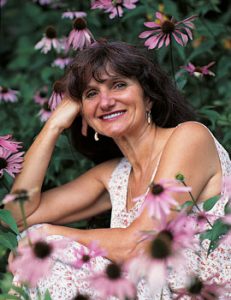
Every week they would give you a new herb to try – it’s called “organoleptics” – (the aspects of food, water or other substances that an individual experiences via the senses—including taste, sight, smell, and touch) – so you’re learning how herbs should taste, look and smell so that you can understand and apply it to quality control.
There’s a medicine-making unit – that was one of my favorites. The teachers were out of this world – I swear they’re actually witches! Anyway, you learn such an incredible amount in the program that it’s hard to even digest it all.
I remember chatting with you about some of your classes at the time because herbal medicine was such a foreign concept to me. Your idea that, just like in food, it’s all about the ingredients, really resonated with me. Where they were grown and how they were harvested affects their nutritional makeup. How did this new knowledge interact with your work on the farm?
The main herbs I grow are things that can double as good cut flowers and medicine making as well. My specialty has become skincare, and I’m known for my lotions and my salve. I was really lucky since I already have the farm. I think a lot of the other students were really challenged to find high-quality plant material. The program had a dryer and I took them up on the opportunity to use it. I would bring in tons and tons of medicinal herbs and flowers and I learned how to dry them.
I can attest! Your products have saved my “farmer skin” more than once.
The healing properties in those products all come mainly from roses, Calendula, Comfrey and Plantain. Besides skin care, I’m really drawn to the immune system.
I make tinctures from a lot of my weeds like Yellow Dock or California Poppy, Echinacea, and Spilanthes. I also do a bitters blend, and an herb shake, which is more of a food blend.
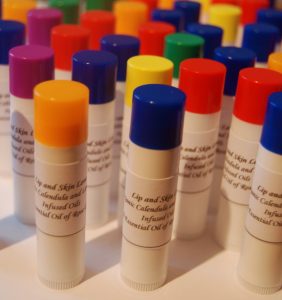
I now make a Fire Cider out of horseradish, garlic, onions, ginger, rosemary, oregano, thyme, dill. I also make tea blends out of Tulsi, Lemon Balm – you name it.
What lead you to these two areas of skin care and immune system care? Were those two areas where you personally needed some help?
The immune system was something that just seemed appropriate because of my family. I have two young nephews who got sick all the time and I kept getting sick, too!
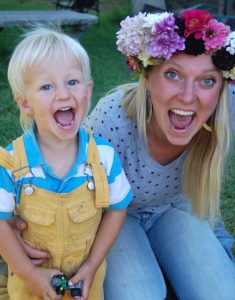
And then the skin care – that was my entry point into all of this. Not everyone likes to do it and it’s sort of harder to make. But Calendula grows really well here especially without any irrigation. It’s able to get really resinous.
I got into skin care because I’ve always been passionate about our largest organ and concerned with the number of products out there with dangerous chemicals in them. It’s such a pleasure to be able to add life and color into lotions and salves and people are more likely to use them than tinctures, herbal pills or glycerites.
Which of your products do you use the most?
As a farmer, I probably use the injury salve the most. It has some wild crafted stuff in it, which is another topic altogether and an important one.
What have been a few of the herbal medicines that have blown your mind?
The injury salve is a big one. It’s interesting – some herbs work right away. It’s fun to give those to people because they can really see the effect. I’m thinking Skullcap for a headache or Cramp Bark for menstrual cramps or Feverfew for a migraine – they just work right away for me.
But herbalism is different than Western medicine as there are a lot of plants you need to create a relationship with. You sometimes have to slowly introduce the plant to your body and then it will start taking effect after you’re used to it. Also, an herbal regimen may sometimes indicate taking it 3-5 times a day, it’s not the same as just popping a pill. It’s a more mindful practice of learning whole body systems.
There’s one tea blend at Rosemary’s Garden that is worth knowing about – it’s called ‘Ease Your Pain’ and it contains Jamaican Dogwood. It’s great for pain and sore muscles. You can’t drive after drinking a cup of it!
What can people make at home?
I think everyone should know about Fire Cider. It’s so good for you and delicious too, you can use it as a salad dressing. There’s a really good YouTube video you can watch of Rosemary making it. It’s important that people know the story of Fire Cider as it recently was trademarked by a company, a really controversial move – it’s been the peoples’ medicine forever. Anyway, it’s works really well preemptively – if you’re getting ready to go on a plane or enter a classroom you could take it. Or during the cold season just to take care of yourself.
So what are some herbs or medicinal plants that people could grow in Sonoma County?
There are so many ingredients you can’t find around here. It’s pretty interesting because unlike the food movement, herbalism isn’t really locally based so get to know a local herbalist! They’re often growing their own herbs. There are some great local practitioners and products if you just look around.
People should grow Echinacea and mints and raspberry and Lemon Balm and Calendula and all the culinary herbs they can. But importantly, once you start to learn about this subject, you’ll notice so many plants around you that have healing properties. Weeds like Yellow Dock, Plantain, Cleavers, Chickweed, dandelions, and mint. They say that ‘the plants you have are the plants you need’ – just get to know what’s growing around you.
How can someone begin a journey to learn more about herbalism?
I really like the saying ‘Anyone who has ever had a cup of tea is an herbalist.’ So just learning more about tea blends and what they can do for you is a great start. I drank nettle tea for the whole month before allergy season this year and it totally helped me out.
The easiest thing you can do is to just start adding more herbs to your meals. Make pesto out of Nettles or Chickweed. Eat more basil, drink more tea. It doesn’t have to be out of reach, just try to have as many plants and as big a diversity of plants as you possibly can in your daily diet.
What do people not know about herbalism?
With so many people getting into herbalism, it’s really important that we start growing as many herbs as we can. Some areas and some plants are being over-foraged. We have to be careful. I think whenever you have the opportunity to buy herbs from a grower or grow them yourself, you should. The lists of what are endangered are really complicated, but Ginseng and Osha Root stand out as two prominent herbs that need protecting. Skullcap is in high demand. If you grew 1,000 feet of that you would probably sell out; it’s great for anxiety, headaches, and stress.
Hedda, thanks so much for sharing all your herbal wisdom with us. Where can people find you and your products?
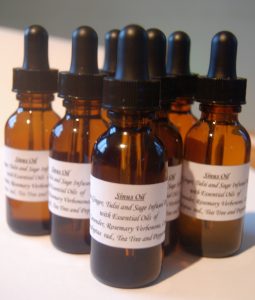
Whenever I make batches I post it on the Full Bloom Flower Farm Facebook page – I’ll also let folks know if I happen to have some extra herbs from time to time but usually I use them in my own products. I have a website for this end of the business with my products and information.
For more information on Hedda and blogger, Lennie Larkin + other local Flowerpreneurs, check out this story in Made Local Magazine – Ed.







 Family
Family

